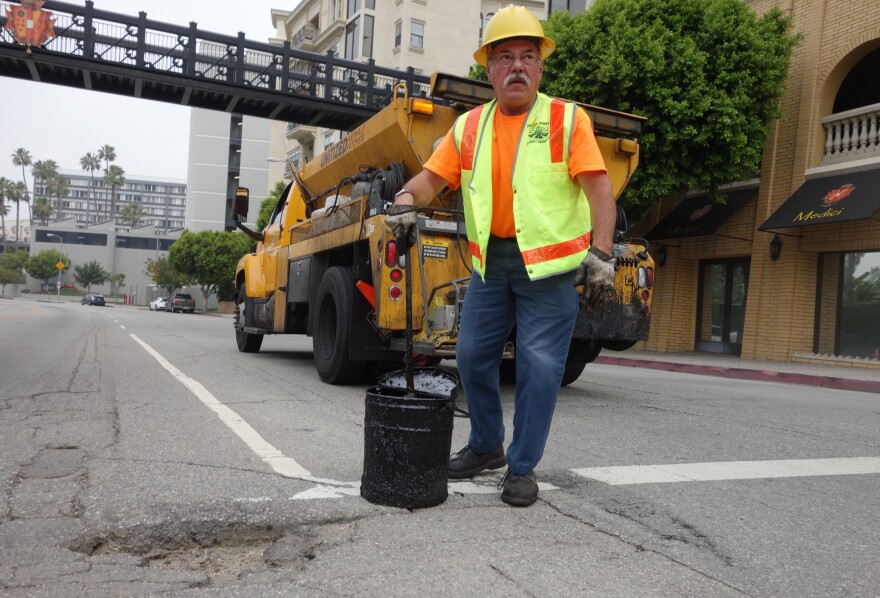With our free press under threat and federal funding for public media gone, your support matters more than ever. Help keep the LAist newsroom strong, become a monthly member or increase your support today.
L.A. Street repair policy: Fix the good, leave the bad

Los Angeles' strategy for fixing deteriorating streets is just what you may have suspected as your car bounces over pavement ruts and assorted potholes: The good streets get fixed, and the worst streets go wanting.
It's a strategy designed to keep the city's overall rating of street condition at a solid C minus on an A to F scale.
"The bureau has been extremely successful in maintaining the city's average pavement condition index at 62 in the last eight years," Nazario Sauceda, director of the Los Angeles Bureau of Street Services told a budget hearing committee earlier this year.
Streets rated A to C, meaning they are in good to fair condition, get maintained with fairly inexpensive, thin layers of gooey black slurry seal to keep them from getting any worse, he explained.
But roads rated poor to failing (graded D and F) are too expensive to fix correctly -- grinding them down to the road surface for a new thick layer of asphalt. So they get minimal repairs.
The bureau uses data on road conditions and computers to select which roads to fix based on groupings that are most efficient and cost effective. The selection is not based on traffic volumes, he said. The city puts 60 percent of its road repair money into residential streets because there are more of them, and the remainder goes to larger streets.
Councilman Joe Buscaino wants the Bureau of Street Services to repair the most heavily used and damaged arterial streets. His public works committee recently approved a plan to prioritize those streets if and when the Bureau gets additional road repair money from a future new tax or voter-approved bond measure. It goes before the City Council Wednesday. The change would not affect current spending.
"If we're asking voters to approve an additional revenue stream in the future, we're going to put that money to use fixing the streets that carry the most traffic and affect the most people first," said Dennis Gleason, policy director for Buscaino.
Other large California cities, including San Jose and Santa Ana take traffic volumes into consideration when deciding which streets need major repairs.
Fixing good streets and ignoring the worst streets takes a financial toll on individual drivers.
TRIP, a national transportation research group in Washington DC, said road conditions in Los Angeles are the worst among the nation's 75 large metropolitan areas. It estimates that drivers pay more than $800 more each year in vehicle wear and tear than the average big-city driver.
An audit by City Controller Ron Galperin's office last year criticized the city's repair policy as one that exposes drivers on the city's biggest commuter routes to the most damaged roads. The audit also said the bureau had failed to prioritize repairs on the city's most heavily-traveled streets.








